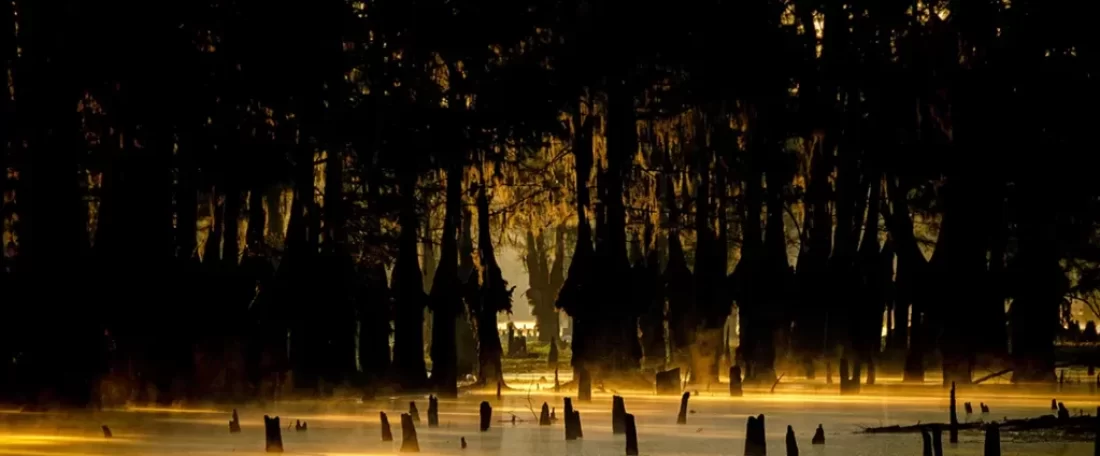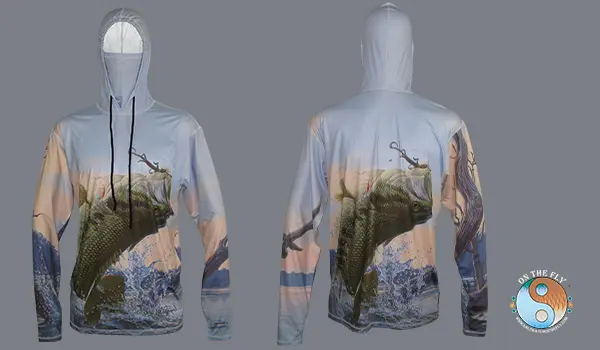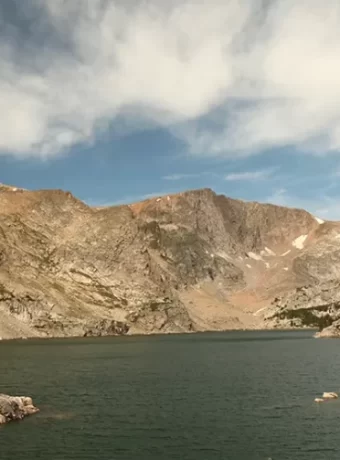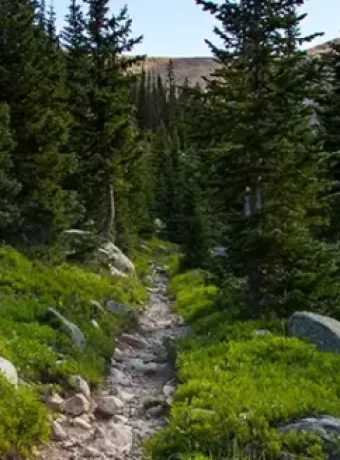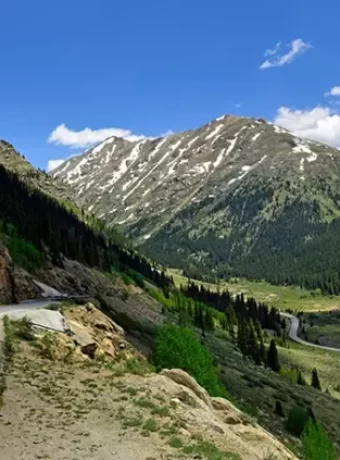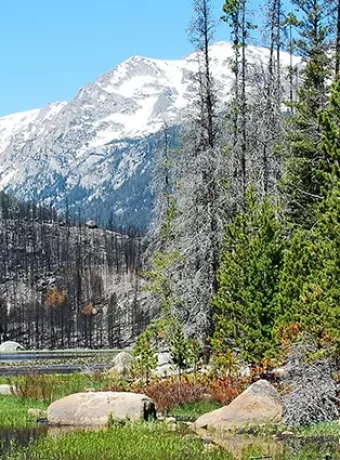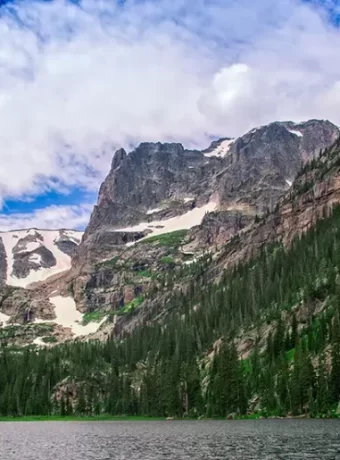Explore Nature’s Wonders: Visit Louisiana’s 21 State Parks
Louisiana’s state parks are a haven of natural beauty and outdoor fun, just waiting for you to explore. When you visit Louisiana’s 21 state parks, you’ll discover a variety of landscapes, from mysterious cypress swamps and sunny beaches to peaceful pine forests and fascinating historic sites. These parks are more than just pretty places—they’re your gateway to experiencing Louisiana’s culture, history, and environment.
I’ve had the pleasure of visiting many of these parks, and each one feels distinct. Whether you love hiking, fishing, or just need a quiet break, there’s a Louisiana state park that’s calling your name. Let’s explore what makes these parks so inviting and why a trip to Louisiana’s 21 state parks should be on your list.
Table of Contents
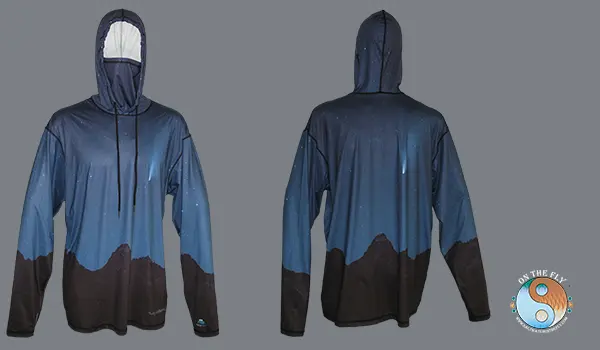
Graphic Hoodies are Performance Hiking Apparel
UPF-50 performance Graphic Outdoor Apparel for hiking, backpacking, fishing hoodies, around camp or town.
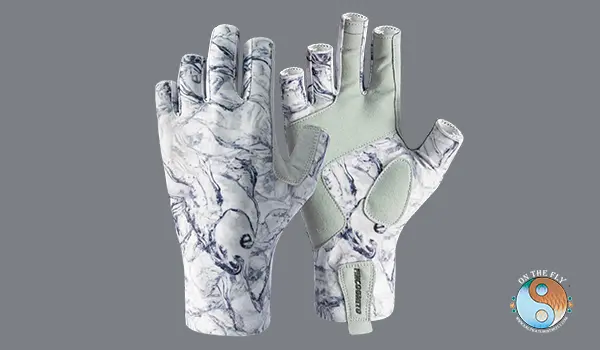
Discovering Louisiana’s Natural Wonders
Louisiana’s state parks system started in 1934 with the State Parks Commission of Louisiana. It has since expanded to 21 parks that highlight the state’s amazing variety of nature and wildlife.
From the Gulf Coast up to the northern hills, each park shows off a different part of Louisiana’s scenery. You can see coastal wetlands full of animals or calm lakes ideal for fishing and boating. The parks are also important for protecting local ecosystems and providing homes for many plants and animals.
A Park for Every Adventure
One of the best parts about Louisiana’s state parks is the wide range of activities available. There’s something for everyone, whether you enjoy hiking, camping, fishing, or simply being in nature.
Hikers can enjoy scenic trails through different habitats, like those in Fontainebleau State Park. If you love fishing, parks such as Toledo Bend Reservoir are famous for their bass. For a relaxing beach day, Grand Isle State Park has miles of sandy coastline perfect for sunbathing and enjoying the waves. Grand Isle also has great options for freshwater fishing.
Preserving History and Culture
Many Louisiana state parks are not just about the outdoors—they also highlight the state’s fascinating history. You can explore historic locations, like the Oakley House at Audubon State Historic Site, where naturalist John James Audubon once resided.
This gives you an interesting look into 19th-century life and Audubon’s studies of American birds. You can see how people lived and worked during that time, gaining insights into Louisiana’s past.
Top Parks to Visit in Louisiana
All of Louisiana’s state parks offer something special, but a few are particularly popular. Here are some of the best parks to visit when planning your Louisiana adventure:
Fontainebleau State Park
Fontainebleau State Park, on Lake Pontchartrain’s north shore, is highly favored. This park is a mix of beautiful scenery and interesting history.
I’ve visited Fontainebleau many times, and it always leaves a lasting impression. The park covers over 2,800 acres with beaches, forests, and wetlands. The hiking trails include a boardwalk that goes over Bayou Cane.
A special part of the park is the remains of a sugar mill from 1829. It’s a reminder of the area’s past and provides interesting photo spots. Fontainebleau is located in St. Tammany Parish.
Chicot State Park
Chicot State Park, in south-central Louisiana, offers a genuine wilderness experience. The park surrounds Lake Chicot, a 2,000-acre lake great for fishing and other water activities.
Chicot is notable for its extensive trails. It has over 20 miles of hiking paths, including a 19-mile loop around the lake. You might see animals like deer, raccoons, and many types of birds.
Sam Houston Jones State Park
Sam Houston Jones State Park, named after a former Louisiana governor, spans 1,087 acres north of Lake Charles. It’s known for varied environments like pine forests, coastal prairies, and cypress swamps.
The park is a fantastic place for bird-watching. More than 200 bird species live there, making it a key spot on the Mississippi Flyway. You might see anything from small warblers to majestic bald eagles.
This park is known for being one of the top spots for wildlife viewing. You might even spot larger animals like deer.
Perfect all around fly rod for fishing Louisiana State Parks is a 9′ 6-weight. Great for bass to panfish.
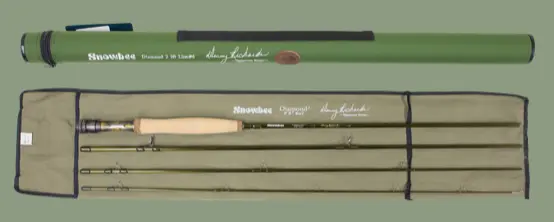
Nine Foot, Six Weight Fly Rod for Fly Fishing Louisiana State Parks
Unique Features of Louisiana’s State Parks
Louisiana’s state parks are known for the special experiences they provide. Here’s what you might find when you visit Louisiana’s 21 state parks:
Diverse Ecosystems
Louisiana’s state parks display the state’s wide range of ecosystems. Each park offers a different environment, from Grand Isle State Park’s coastal marshes to Lake D’Arbonne State Park’s hills.
This variety is important for both its beauty and ecological role. Many parks are critical habitats for rare species. Tickfaw State Park, for example, contains one of the few remaining bottomland hardwood forests in the area. There is so much Louisiana natural beauty to be discovered.
Water, Water Everywhere
With many lakes, rivers, and coastal spots, water is a major feature in Louisiana’s state parks. These areas are perfect for anyone who loves fishing, boating, or just enjoys beautiful views.
Lake Fausse Pointe State Park gives access to the Atchafalaya Basin, the biggest river swamp in America. You can paddle through cypress swamps in a canoe or kayak, and perhaps see alligators and different bird species. This area offers many ways to engage with nature.
Historical Sites
Several Louisiana state parks highlight the state’s extensive history. Fort Pike State Historic Site, preserves a 19th-century fort. This fort once protected the water route to New Orleans.
It’s a great place to learn about Louisiana’s military past. Exploring this historic site gives you insight into how the area was defended and developed.
Planning Your Visit to Louisiana’s State Parks
If you’re planning to explore, here’s how to make the most of your trip to Louisiana’s state parks:
When to Go
Louisiana’s warm climate makes the parks accessible all year, with each season offering something different. Spring and fall usually have mild weather, which is perfect for outdoor activities.
Summers can be hot and humid, but it’s an ideal time for swimming and boating. Winter is mild, good for hiking and spotting wildlife. Each season brings its own special charm to the parks.
Accommodation Options
Many Louisiana state parks have places to stay, from campsites to cozy cabins. For example, Chicot State Park provides both campsites and cabins with views of the lake.
For a different experience, you might stay in one of the historic cabins. Lake Fausse Pointe State Park offers cabins built in the 1930s. These accommodations add a touch of history to your stay. You may also want to try some RV camping while visiting.
Activities and Amenities
Check each park’s website to find out what activities and facilities are available. Most parks offer hiking, fishing, and picnic spots.
Many also have areas for launching boats, swimming, and playgrounds for kids. Poverty Point Reservoir State Park even offers tram tours of the nearby Poverty Point World Heritage Site. This ancient Native American site is a fascinating place to learn about early cultures.
Here’s a summary of some popular activities you can find:
| Activity | Description | Parks |
|---|---|---|
| Hiking | Explore trails of varying lengths and difficulties | Fontainebleau, Chicot, Sam Houston Jones |
| Fishing | Enjoy fishing in lakes, rivers, and coastal areas | Toledo Bend, Grand Isle, Lake Chicot |
| Boating | Rent canoes, kayaks, or bring your own boat | Lake Fausse Pointe, Lake D’Arbonne |
| Bird Watching | Spot a wide variety of bird species | Sam Houston Jones, Tickfaw |
| Camping | Stay in campsites or cabins | Chicot, Lake Fausse Pointe |
Fly Fish Toledo Bend State Park
Toledo Bend Reservoir is a big lake. It sits on the border between Texas and Louisiana. North Toledo Bend State Park gives you great access. This is a fly fisher’s dream. This massive reservoir is well-known for its largemouth bass. But it also has crappie and catfish.
Bring your fly rod to target these fish. The shallows are teeming with aquatic life. This makes them perfect for fly fishing. You’ll find plenty of spots to wade. Or you can fish from a boat. Many anglers launch from the park’s boat ramps. This lets them explore the numerous coves and inlets.
Early morning and late evening are great times to fly fish. The bass are more active then. Low light conditions make it easier to present your fly. Try using poppers or streamers. These mimic the movement of baitfish. This can entice some exciting strikes.
If you’re after crappie, look for areas with submerged brush piles. Use small nymphs or wet flies. These will attract their attention. For catfish, try using sinking flies or weighted streamers. These will get down to the bottom. This is where the catfish often feed.
Beyond fishing, North Toledo Bend State Park offers a lot to do. There are hiking trails. You can explore the scenic beauty of the Louisiana landscape. The park also has camping facilities. So, you can extend your fly fishing adventure.
Remember to check the Louisiana fishing regulations. You’ll also want to grab any necessary licenses before you start fishing. Toledo Bend Reservoir is known as one of the best fishing spots in the South. This park lets anglers experience its bounty firsthand.
Fly Fish Lake Fausse Pointe State Park
Lake Fausse Pointe State Park, near St. Martinville, is a fly fisherman’s dream. It’s part of the Atchafalaya Basin. This spot is great if you love to fly fish. The cypress swamps and marshes make a pretty backdrop. But they also give the fish lots of places to hide. This makes it fun for people who like a challenge. You can find largemouth bass here. Fly fishing for Panfish like Bluegill and redear sunfish are also common catches. This Louisiana state park is perfect if you’re a fan of fly fishing.
The many coves and inlets make this a special place to fish. The water is calm and shallow in these spots. This gives fly fishermen a big advantage. It lets them get their lures close to where the fish hide. Plus, the scenery is amazing. You might even see some wildlife while you fish. This park is one of the best Louisiana state parks for hiking trails. It also has some great spots for camping.
Here are a few tips for fly fishing at Lake Fausse Pointe State Park:
- Bring insect repellent. The mosquitoes can be pesky, especially during the warmer months.
- Use light-colored flies. This helps them stand out in the murky water.
- Fish slowly and patiently. The fish might be hiding in the thick vegetation.
- Hire a guide if you’re new to the area. They can help you find the best fishing spots. They can also teach you about the local fish and their habits.
Besides fishing, this Louisiana state park offers other activities. You can explore the hiking trails. There are over 15 miles of trails to discover. You can also go boating or kayaking. Or maybe just relax by the water. This state park has something for everyone.
Fly Fish Fontainebleau State Park
Fontainebleau State Park, near Mandeville, is a fly fisher’s dream. This Louisiana state park sits on the shores of Lake Pontchartrain. It has over 2,800 acres of lake to explore. Plus, you have bayous and marshes too. This creates a really unique fly fishing experience.
The park offers plenty of spots for wading. You can also fish from the shore. But if you want to cover more ground, bring a kayak or canoe. Small motorized boats are also allowed. This lets you get to those hard-to-reach fishing holes. The park has a boat launch if you need it.
Lake Pontchartrain is famous for its redfish. These hard-fighting fish are a top target for fly anglers. Speckled trout also call this lake home. They offer a thrilling fight on light tackle. If you are lucky, you might even hook a flounder. This tasty fish blends in well with the sandy bottom. Look for them in shallow, grassy areas.
Early morning and late evening are usually the best times to fly fish. The lower light makes it harder for fish to see your line. The cooler temperatures also make fish more active. But, you can still catch fish throughout the day. This is especially true if you find shady spots or deeper water.
Before you head out, get a Louisiana fishing license. Make sure you know the park’s fishing rules too. Bring plenty of water, sunscreen, and bug spray. Comfortable shoes are important because you might be doing some walking. Polarized sunglasses help you see fish in the water. And of course, don’t forget your fly rod and a selection of flies!
Conservation and Education in Louisiana’s State Parks
Louisiana’s state parks are centers for learning and protecting nature. Parks often feature programs and centers where you can learn about local wildlife.
The Louisiana State Arboretum, inside Chicot State Park, covers 600 acres dedicated to Louisiana’s native plants. Here, you can go on guided walks and learn about the state’s plant life. These educational resources help visitors connect with and appreciate nature.
Junior Ranger Program
If you’re bringing kids, they might enjoy the Louisiana State Parks Junior Ranger Program. This program is available at many parks. It lets children learn about nature through activities and challenges.
FAQs about Visit Louisiana’s 21 State Parks
What is the most popular State Park in Louisiana?
Fontainebleau State Park is often considered the most popular, due to its beautiful setting on Lake Pontchartrain and diverse habitats. However, all parks offer their own draw.
Do seniors get a discount at Louisiana state parks?
Yes, Louisiana state parks offer discounts for seniors. Louisiana residents 62 and older get 50% off entrance fees and campsites. It’s best to check current information on the Louisiana State Parks website.
Can you use America the Beautiful pass at Louisiana state parks?
The America the Beautiful pass usually works for national parks and federal recreation areas, but it’s not accepted at Louisiana state parks. Louisiana has its own annual pass, which is a great option if you plan to visit several parks. With this you may experience Louisiana’s natural beauty for less.
How much does it cost to go to the Fontainebleau State Park?
As of 2024, Fontainebleau State Park charges $3 per person for visitors aged 4-61. Seniors (62 and older) pay $2, and children 3 and under are free. Camping and cabin fees vary. For current prices, visit the Louisiana State Parks website.
Additional Louisiana State Parks
Here are a few more state parks that deserve an honorable mention that all have something unique and different to offer to visitors and locals alike:
Lake Bistineau State Park
Lake Bistineau State Park is renowned for its stunning cypress and tupelo gum forests, which are intertwined with the waters of Lake Bistineau. This park offers a magical experience, particularly for those who love to explore by boat or enjoy fishing.
The park also offers excellent opportunities for bird watching and hiking through its picturesque trails. Lake Bistineau’s natural beauty also makes it a wonderful location for picnic areas, with numerous scenic spots.
Cypremort Point State Park
Cypremort Point State Park is unique among Louisiana’s state parks as it features a man-made beach on the Gulf of America, offering a rare saltwater beach experience in the state. Located in St. Mary Parish, the park is a favorite for swimming, windsurfing, and sailing.
The nearby marshes add a diverse ecological element, making it a prime location for birding and nature photography.
Bogue Chitto State Park
Bogue Chitto State Park, situated in Washington Parish, is one of the newer additions to the Louisiana State Parks system. It features diverse terrain that includes small streams, cypress-tupelo swamps, and upland forests. The park’s varied landscapes support activities such as horseback riding, mountain biking, and hiking.
The Bogue Chitto River itself is popular for tubing and paddling, offering gentle flows suitable for families. The Bogue Chitto River has deep ties into the Louisiana Department of Culture, Recreation and Tourism. Bogue Chitto offers a lot to visitors in terms of wildlife and history.
Bayou Segnette State Park
Bayou Segnette State Park offers a unique mix of natural landscapes and is located just a short drive from New Orleans. Jefferson Parish contains Bayou Segnette, known for its popular wave pool and boating facilities. The park’s location allows visitors to easily experience both the vibrant city life of New Orleans and the serene natural environment.
The surrounding Louisiana wetlands make it a hotspot for fishing, with opportunities to catch both freshwater and saltwater species. Bayou Segnette’s accessibility makes it an attractive spot for day trips and short vacations, where visitors can enjoy everything. Bayou Segnette’s unique environment is also excellent for bird-watching.
It’s the perfect destination for someone that wants to visit a big city but still wants a nearby nature getaway.
Poverty Point Reservoir State Park
Located near the Poverty Point World Heritage Site, this state park offers a completely different kind of outdoor experience. It is focused around a large man-made reservoir.
The park is popular for water sports and fishing. The Point Reservoir allows visitors to relax in a tranquil setting. The nearby archaeological site also offers fascinating day trips.
Jimmie Davis State Park
Jimmie Davis State Park is located on Caney Lake. This is another park that combines natural beauty with plenty of outdoor fun. The lake is known for its clear waters and great fishing spots.
This makes it a favorite among anglers. You’ll also find plenty of trails for hiking and biking, along with spots for camping and enjoying picnics. The park’s quiet setting provides a perfect escape for those looking to relax and connect with nature.
Lake Bruin State Park
Lake Bruin State Park sits on the shores of Lake Bruin, a beautiful oxbow lake formed by the Mississippi River. The clear, calm waters of Lake Bruin are perfect for swimming, boating, and water skiing. This park is known for its relaxed atmosphere and scenic beauty.
Fishermen are also drawn to Lake Bruin, thanks to its reputation for excellent fishing.
Palmetto Island State Park
Palmetto Island State Park provides a real taste of south Louisiana’s wetlands. This park features dense palmetto undergrowth and a network of lagoons and waterways. It is located a short 15 minute drive south of Abbeville.
It offers visitors the chance to explore the unique coastal environment up close. Canoe trails wind through the park, offering a peaceful way to see the landscape. You might spot local wildlife like birds, alligators, and other wetland creatures.
Lake D’Arbonne State Park
Lake D’Arbonne State Park, nestled in the piney hills of northern Louisiana, is centered around the vast Lake D’Arbonne. It’s famous for its beautiful setting and great fishing spots. The lake is a favorite for anglers looking to catch bass, crappie, and catfish.
Besides fishing, the park offers plenty of other activities. There are trails for hiking and disc golf. There are lots of spots perfect for a family picnic.
Conclusion of Visit Louisiana’s State Parks
Louisiana’s state parks showcase the state’s natural beauty, outdoor adventures, and history. These parks highlight Louisiana, from the Atchafalaya Basin swamps to the Gulf Coast beaches.
When you visit Louisiana’s 21 state parks, you help support conservation and learn about Louisiana’s environment. These parks offer something for everyone, whether you live nearby or are visiting. Pack your gear and prepare for adventure.
Louisiana’s state parks are ready for you to explore. Every visit tells a new story. Experience these natural spots and see why they are so special.
Lean more about Louisiana Fly Fishing and Fly Fishing Louisiana Redfish.
